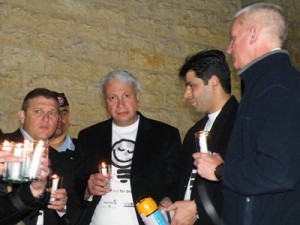 Corruption, poor management, and climate change have driven away nearly half a million Eastern Syrians and impoverished thousands more.
Corruption, poor management, and climate change have driven away nearly half a million Eastern Syrians and impoverished thousands more.
Nearly half a million people have abandoned an area in Eastern Syria near the Euphrates River that has shrivelled under a five year drought. Fierce temperatures and dwindling rainfall, as well as corruption and mismanagement of existing water resources, has led to what Trade Arabia calls the largest internal migration of people since Britain and France “carved the country out of the Ottoman empire in 1920.”
Those that stayed behind must scrape life out of ruined croplands and filthy water – since most of the choice supplies have been diverted to well-connected farm owners. Others irrigate crops with water usurped from illegal wells, but that’s not enough to provide for everyone. Thousands of people are receiving aid from the World Food Program, while others have been relegated to slums.
In the 1980’s, the region that used to belong to the ancient Inezi tribe received 189mm rainfall annually. During the nineties that fell to 163mm and has plummeted to 152mm in the last decade. Meanwhile, thispast summer, Syria experienced 46 consecutive days of temperatures higher than 40 degrees Celsius, according to Trade Arabia.
Only 15% of livestock remain, and locals are unable to till their own land for food.
“Environment Minister Kawkab al-Dayeh told a water conference in Damascus last month pollution had played a role in the deterioration of 59 percent of total agricultural land, with raw sewage being widely used for irrigation,” AT reports.
With more than a hint of nepotism, water trenches divert water to the west, where farms are flourishing, while the nearby lands on the eastern side are parched.
“Jub Shaeer is only 3 km from the canal, but look how dry the land is in the village,” Ahmad al-Mehbash, head of the state-backed Peasants Union in Raqqa province, told the paper.
With a population of 20 million that is expanding at a rate of 2.5%, the antique irrigation system promises to fail its citizens even further in the future. In response, the government has suggested that it must scale back subsidies.
“Subsidies on fertilisers have been abolished, helping to lessen corruption,” agriculture minister Kawkab al-Dayeh told AT. But in the meantime, those that are using 90-95 percent of Syria’s water contribute only 13% to the Gross Domestic Product and tales of suffering are streaming out of the country.
“Mariam al-Falaj is raising five children alone. Her husband found work as a shepherd in Saudi Arabia after his own flock died,” according to the paper. Children are going without vaccinations and government efforts to render the area “drought resistant” has done no more than collect data.
The World Food Program has stepped in to feed nearly 200,000 people, while over 100,000 more are in need of rations.
Thank goodness for that, but how long will aid agencies be able to pick up the government’s slack?
:: Trade Arabia



What this area needs is large scale desalinized water via reactor plants along the coast-most practical.Can advise please let me know([email protected]). Others; redouse the ground water plane such as with Iranian technology or perhaps pipe-in from Black sea.
E-
Right and how is energy poor Syria supposed to pay for this energy intense privilege?